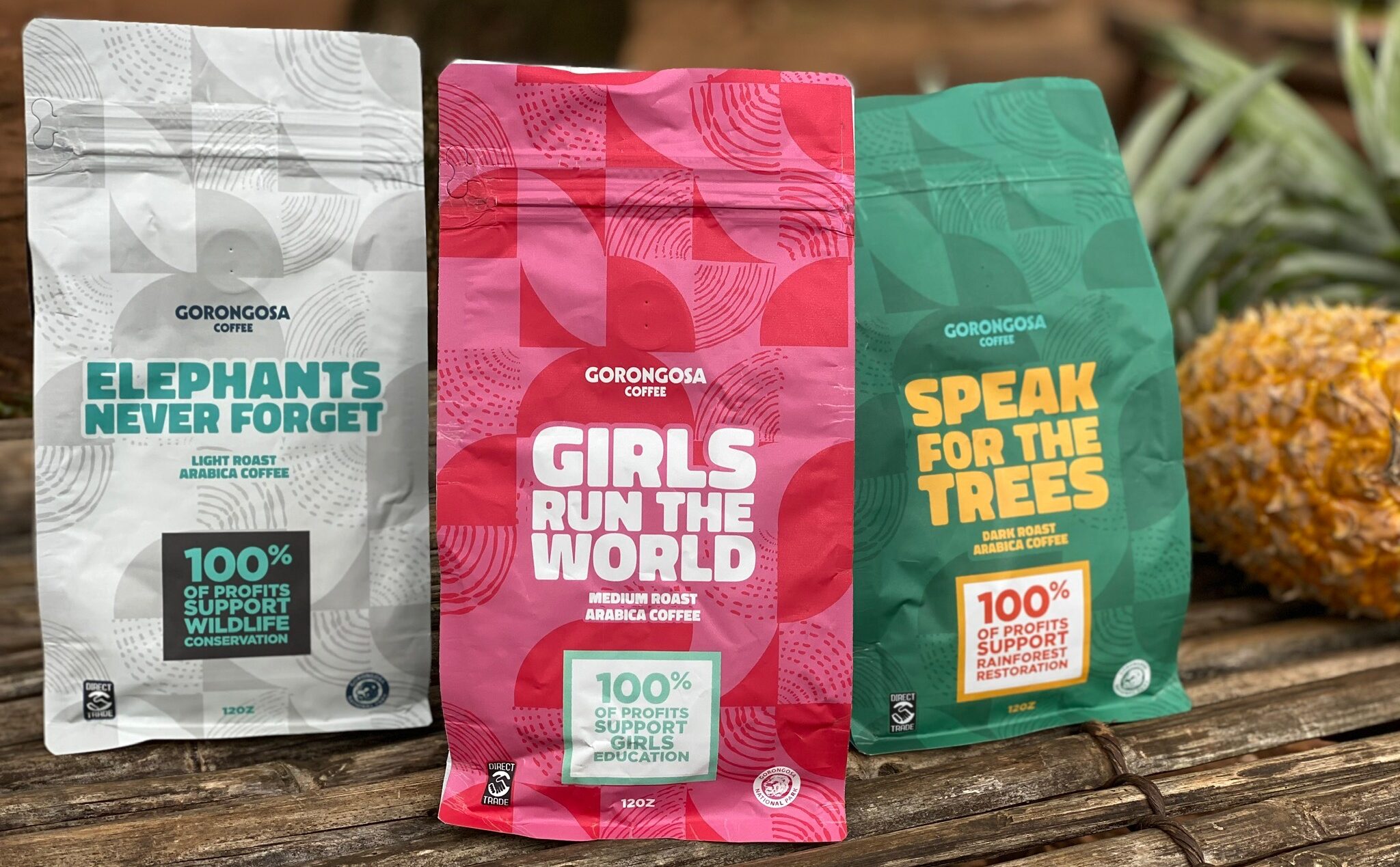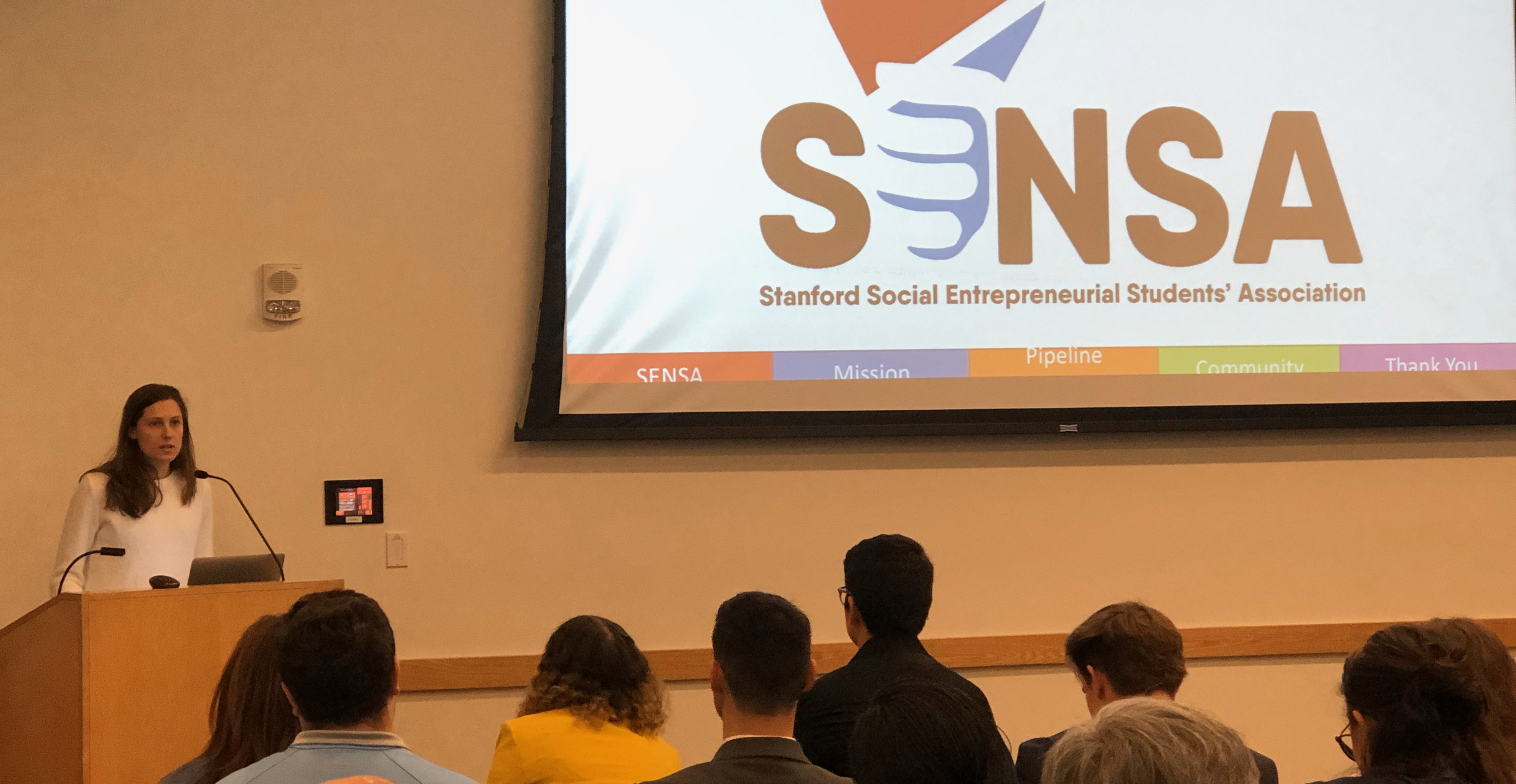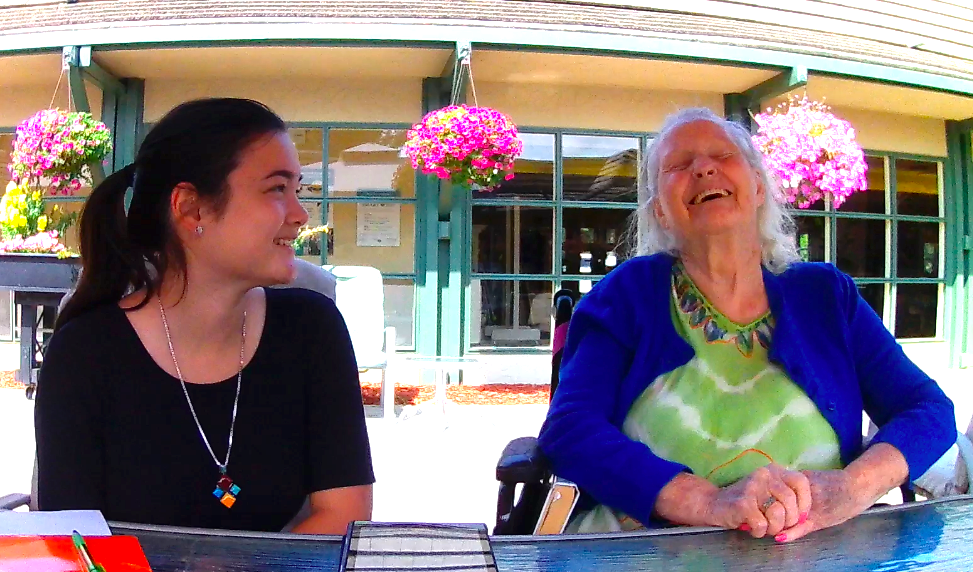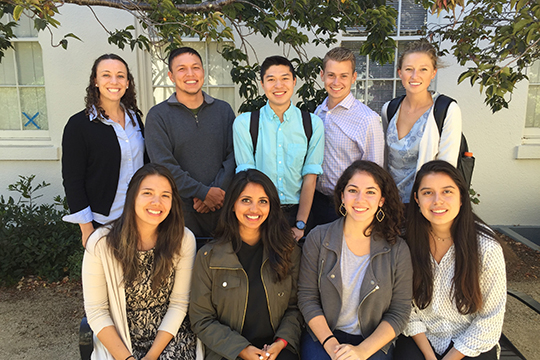Category: Social Entrepreneurship

Girls Run the World in Gorongosa National Park
By Eric Wilburn, MS ’18, MA ’18
Gabriela “Gaby” Curtiz grew up just down the road from Gorongosa National Park in Mozambique. The park is one of the most biodiverse places on Earth and is surrounded by more than 200,000 people who live on very limited resources. These neighboring communities struggle to make ends meet due to lack of employment. Many young women in these communities lack the opportunity to finish primary school because of societal expectations, household responsibilities, and a shortage of schools and teachers.

When Gaby was twelve years old, her primary school showed a National Geographic film about Gorongosa National Park, sparking her dream to work with animals in the park. Nine years later, Gaby was certified as the first female safari tourism guide in Gorongosa’s history.
I met Gaby last year on her first trip to the United States. She was visiting Boise State University, where she will begin her undergraduate studies this fall. Of course, service was a part of her trip! She gave a talk to a group of elementary school students about Gorongosa. It was amazing to see their eyes light up and their hands skyrocket to the ceiling with questions about her life in Gorongosa. She emphasized the importance of working with local communities in conservation efforts, and explained that providing livelihoods for local families was the key to sustainable nature conservation. Her example? Coffee.
Why coffee? Because there are hundreds of families like Gaby’s living on the flanks of Mount Gorongosa that need an alternative to unsustainable agricultural practices to feed their families. There is no need for farmers to cut down the forests to make room for non-native crops, as farmers can plant native hardwood saplings in between the rows of coffee to provide shade. Coffee gives these farmers a dependable income while helping restore the rainforests of Gorongosa.
I was thrilled to hear Gaby share her story, and was particularly excited when she chose coffee as her example. Having recently graduated from Stanford, I had just begun working with Gorongosa National Park to launch Gorongosa Coffee, a for-profit company that sells premium roasted coffee around the world and sends 100% of profits back to the park to support operating costs.
After her talk, Gaby and I were chatting about how Gorongosa Coffee wanted each of our roasted coffees to support a different initiative in the park. Gaby said that the most unique aspect of Gorongosa is that the park fundamentally believes that girls’ education is the key to both human development and nature conservation.
Inspired by Gaby, Gorongosa Coffee created a Girls Run the World coffee that sends 100% of profits to help over 20,000 girls in Gorongosa finish high school. The funds help build schools, provide high school scholarships, and connect girls with mentors through afterschool programs. We hope to demonstrate that when we give girls in Mozambique the confidence, capability, and opportunities to determine their own futures, we encourage more leaders like Gaby.
One of the defining aspects of our model that helps ensure our company has a positive impact is that the lone shareholder of Gorongosa Coffee is the trust that funds the park. In other words, Gorongosa Coffee is a social enterprise which keeps control of this community-based initiative within the community it serves.
Gaby graduated from high school in Gorongosa and will start at Boise State University in September, pursuing a degree in business tourism. Her goal is eventually to become the head of tourism for Gorongosa National Park.
Gaby and I come from very different backgrounds, but we share a commitment to serving the people, wildlife, and ecosystems of Gorongosa. We believe that the path forward for people and the planet is that every business thrives, not to fill the pockets of a few shareholders, but in service of an equitable and sustainable future for all.
I invite you to help us empower young women like Gaby from the communities of Gorongosa to break barriers and bring positive change to their communities. You may order our coffee at GorongosaCoffee.com.

Eric Wilburn, MS ’18, MA ’18, served in the Peace Corps in Mozambique before arriving at Stanford to pursue dual masters degrees in environmental engineering and public policy. During his time at Stanford, Eric was a Graduate Public Service Fellow and also coached the Stanford Triathlon Team. Recently, Eric has been helping to launch a company called Gorongosa Coffee that aims to benefit local communities, wildlife, and nature in Mozambique by supporting conservation, education, and economic development.

Learning through Service
By Kathryn Rydberg, ’19
When I entered the sixth grade, I switched to a new school. As the new girl, I was confronted by new classmates, new surroundings, and new classes—including a class called “Service Learning,” which involved reading books to second graders at a nearby charter school. Initially, I was confused as to why this program was called Service Learning. Since the goal of the class was to help the second-graders learn to read, I figured that a more accurate name might be “Service Teaching.” By the end of the year, however, I realized that the program had taught me as well. I came to understand how challenging it can be to teach a student something new, but more importantly, the experience of going to the school and interacting with the younger students exposed me to an environment and community that I would not have otherwise known. Though this experience happened when I was much younger, the realization that service initiatives can be beneficial to the people doing service as well as to those in need stuck with me.
Fast forward to my first year at Stanford, when I came across a club that seemed to be focused on making the world a better place while teaching students valuable professional skills at the same time. As it turned out, professional skills were just the tip of the iceberg of what my involvement with the Stanford Social Entrepreneurial Students’ Association (SENSA) would give me. Meaningful friendships, leadership skills, professional connections, experience speaking at an international conference with hundreds of attendees: these are all things I would never have had if not for SENSA.
I learned that not everyone agrees on what social entrepreneurship is, but that in general, it means applying entrepreneurial strategies in an effort to make positive, sustainable social change. Per that goal, social entrepreneurs recognize the crucial fact that if a business is economically sustainable, then it is able to make a more sustainable social impact. Similarly, organizations are more effective if smart, talented people continue to invest their efforts into them over time. Opportunities for learning and growth provide an incentive for people to continue their involvement with the organization—and that means that the organization can continue doing important work.
I saw this firsthand during a time of great turnover within SENSA. If students felt that they were not benefiting from their membership, they would quickly cease coming to meetings or replying to messages. Beyond the satisfaction of helping others, every organization has learning opportunities to offer its members: communication skills, teamwork, or leadership of an event or program. Though I was learning a great deal through my involvement with SENSA, I realized that others might lack access to these opportunities for growth. As a result, I worked to restructure SENSA to ensure that every member was able to take ownership of their service learning.
I believe that this lesson could also benefit social enterprises. Of course, the goal of many social enterprises is to put themselves out of business by solving the problem that they exist to address, but many social problems are so complicated that they will likely not be solved within our lifetimes. Therefore, the issue of talent should be viewed in the same terms as financial sustainability. Social enterprises should aim to keep employees and others who interact with their organizations engaged by offering benefits beyond the satisfaction of helping others. When the financial model and the “people model” are both sustainable, then an organization can focus fully on solving the complex issues that afflict our society.

Kathryn Morgan Rydberg has a BA in American Studies and a minor in political science. Throughout her undergraduate career, Kathryn was actively involved in the Stanford Social Entrepreneurial Students Association (SENSA) and became president and the Cardinal Commitment mentor of the organization. As a senior, she was a member of the Public Service Honors Society and the Pi Sigma Alpha Political Science Honors Society. She also served as marshal for Kappa Kappa Gamma and participated in the Stanford Marketing Group.

Music, Laughter, and Joy: A Summer of Therapeutic Music in Senior Living Communities
By Samantha Starkey, ’19
Research shows that singing has beneficial effects on the mood, cognition, and health of older adults. These findings are the basis of my placement organization last summer, SingFit, a Los Angeles-based startup that uses technology to make therapeutic music more widely accessible for older adults. During my time interning with SingFit, I saw how one-on-one and group therapeutic music sessions in senior living communities enhance the well-being and social engagement of older adults.
At one of my group sessions at a memory care facility, there was a gentleman who at first seemed confused and disgruntled.
“I can’t sing. I don’t know the words. I can’t even hear properly,” he complained.
As time went on, he began singing along with the group, and he would suggest songs from musicals like West Side Story, once gracing us with a brief rendition of “Maria” in a mellifluous tenor voice.
One day, we sang the Andrews Sisters song, “Beer Barrel Polka.” Most songs have associated dance moves to encourage movement, and we all repeated the “Beer Barrel Polka” move throughout the song: pretending to drink a mug of beer. Afterward, with a deadpan face, he looked at me and mock-sternly cried, “You’re over your limit!” The whole group giggled.
That gentleman was just one of the many people who had a profound impact on me this summer. Working with him made me realize that patience, respect, and music can bring out talents, humor, and joy in people.
Sam Starkey is a senior studying human biology and education. Samantha served as a Roland Longevity Fellow with SingFit. At Stanford, she has been involved in several Cardinal Commitment student organizations, including Side by Side, The Bridge, and Ravenswood Reads. She is from Vancouver, Canada.

Students learn about philanthropy and social change
Two Cardinal Quarter summer opportunities, the Corporate Social Responsibility Fellowship and the Philanthropy Fellowship, place students with Bay Area corporations and foundations to learn how these organizations work to effect change in areas from sustainability and education to entrepreneurship and grantmaking.
By Amy Harris, ’14
